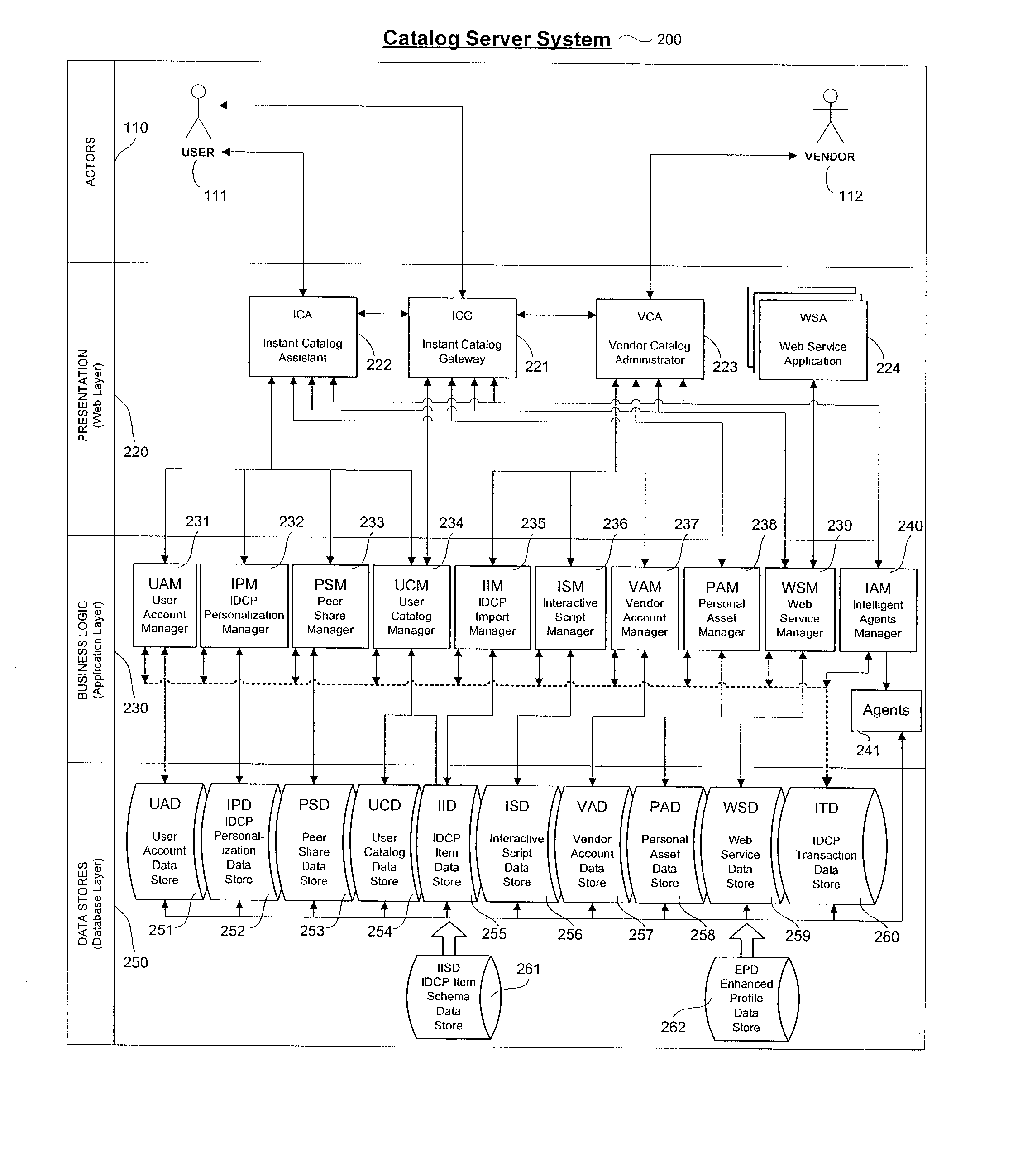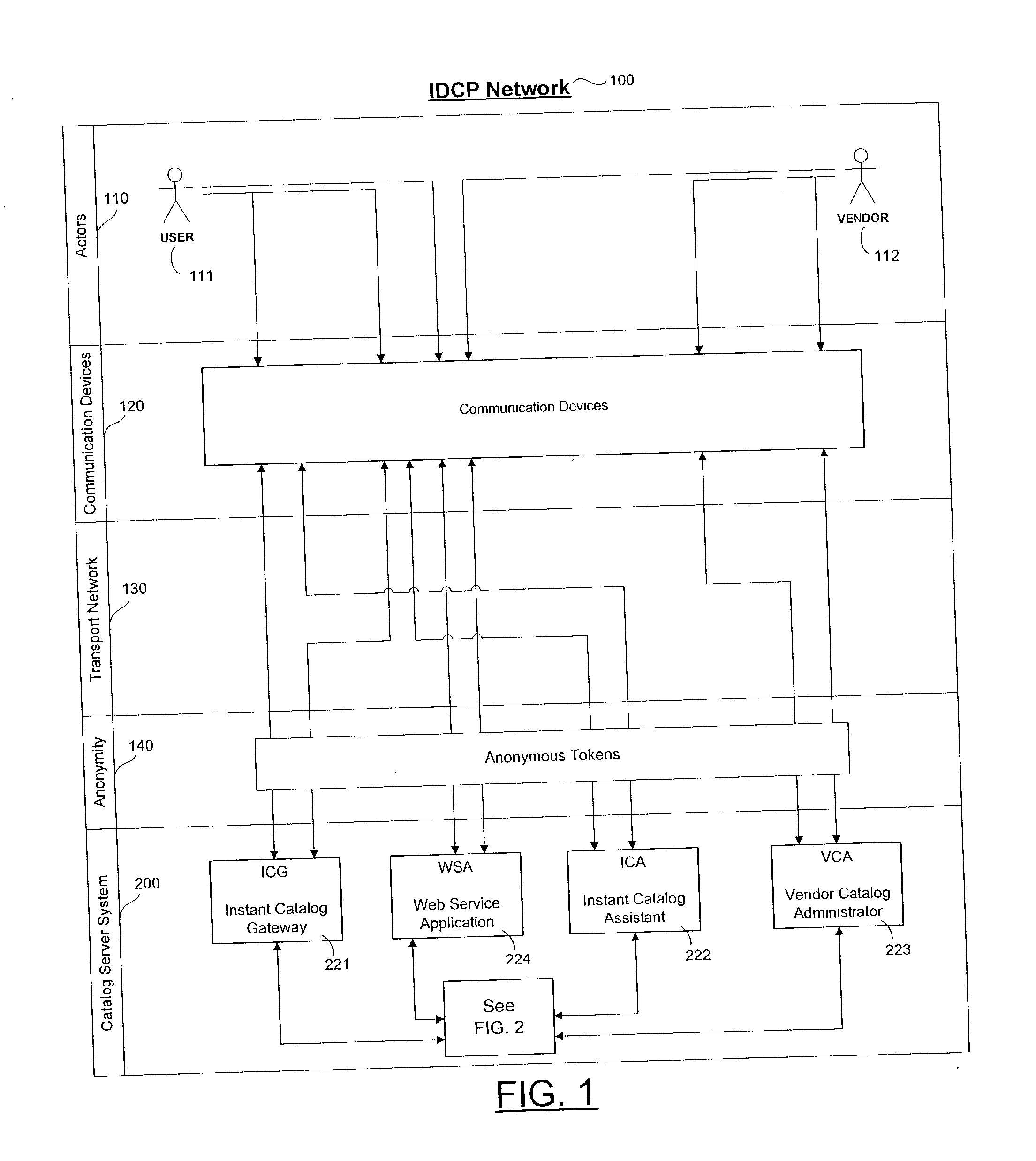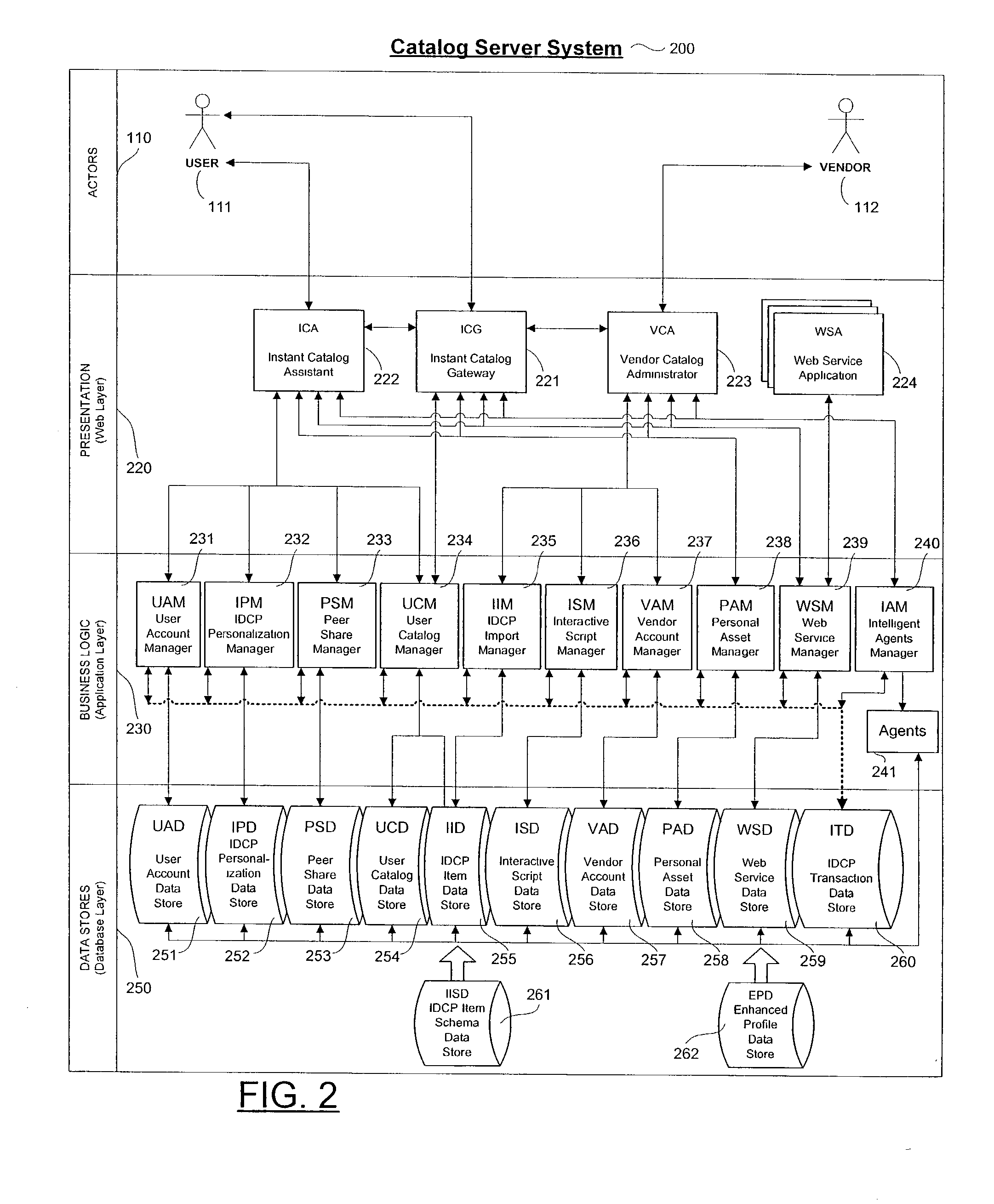Personalized interactive digital catalog profiling
a technology of personal profiles and digital catalogs, applied in the field of personal profiles, can solve the problems of increasing the exposure of consumers to unsolicited advertising, increasing consumer resistance, static and blind methods, etc., and achieves the effects of reducing industry's reliance, enhancing e-catalog marketing, and efficient and timely delivery
- Summary
- Abstract
- Description
- Claims
- Application Information
AI Technical Summary
Benefits of technology
Problems solved by technology
Method used
Image
Examples
examples
[0133] Although none of the currently available applications provide the cataloging features of the present invention, many "third-party" technologies and components are addressing legacy information extraction, intelligent search routines, and e-Catalog classification just to name a few. All of which could be integrated into the present invention.
[0134] Using technology from WIZNET.TM., raw data from the Vendor can be converted from paper to digital format for export to the IID. WIZNET is a useful tool for moving the Vendor's data from an unabridged format to a query able digital document format for use with the present invention.
[0135] Another industry example of potential use is the Cuesta Online Catalog System as provided by Cuesta Technologies. Cuesta provides customizable online catalogs and searchable databases for business and e-Commerce Web sites. The Cuesta Web development system uses state-maintenance programming without cookies, to provide programmable, dynamically gener...
example use
[0300] Example Use of Multiple Vendors
[0301] An example of a multiple Vendor 112 scenario would be an interactive travel program. There could be several Catalog IDs 401, embodied as either ICS-ID 600, or IPS-ID 610 that are collected from each of the Vendor categories represented, such as hotels, airlines, tours, restaurants and ground transportation. Ultimately, a Travel Planner Web service application could collect all Instant Catalog references dealing with travel for generating an enhanced travel guide and itinerary. The User 111 can utilize any preferred communication device 120 to access the IDCP Network 100. Through ITV, an Internet browser or a WAP device, the User 111 can select a destination and, with the profile information already entered, make decisions potentially relating to every important aspect to the required travel itinerary, from class of fare to meals to smoking preference. This provides the User with a catalog of possibilities for any particular destination. T...
application example
[0475] Photography Web Service Application Example
[0476] For an example of how a Photography Web service could quickly display a series of questions to compile a consumer report or guide of all the catalog groupings that revolve around buying, servicing, or educating the consumer. For this photography example, the ICA 222 could ask: "What type of photography interests you?" The User 111 might be given three choices to choose from: macro, standard or wide angle. Macro photography is taking close-up pictures of small things. Standard photography captures subjects of medium size. Wide Angle photography is ideal for capturing large objects or scenes. Based on the type of photography specified, each subcategory would provide the appropriate selections form self-selected catalog groupings, peer shared catalog groupings, or Vendor catalog groupings in that order of priority. The User would make selections from the lists presented. Additional information such as where to purchase the items,...
PUM
 Login to View More
Login to View More Abstract
Description
Claims
Application Information
 Login to View More
Login to View More - R&D
- Intellectual Property
- Life Sciences
- Materials
- Tech Scout
- Unparalleled Data Quality
- Higher Quality Content
- 60% Fewer Hallucinations
Browse by: Latest US Patents, China's latest patents, Technical Efficacy Thesaurus, Application Domain, Technology Topic, Popular Technical Reports.
© 2025 PatSnap. All rights reserved.Legal|Privacy policy|Modern Slavery Act Transparency Statement|Sitemap|About US| Contact US: help@patsnap.com



